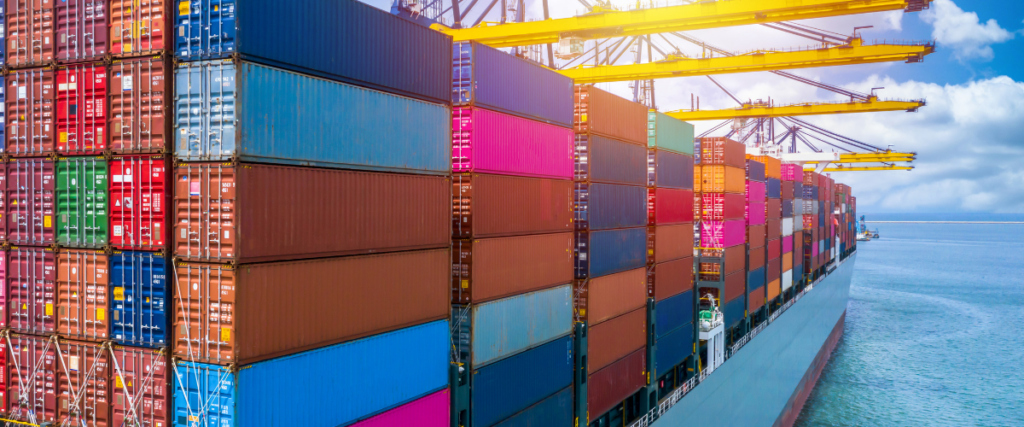Multimodal is becoming more and more important in global transportation due to how efficient it is when compared to other types of transport.
Not only does this mean that more volume can be freighted at less cost but there are significant reductions in carbon emissions.
As the transport industry comes under increasing pressure to reduce its negative effects on the environment then multimodal freight will increase in use.
So should you change the way you transport your goods?
What is multimodal transport?
Multimodal means a combination of more than one mode of transport which includes road, rail, barge, sea, or air for a single consignment rather than just one such as just road.
If goods are taken by road to either an airport, seaport or train station and then shipped by air, sea or rail then this is called multimodal.

What are the advantages of multimodal transportation?
Kinder to the environment
Multimodal is the greenest method of shipping goods as, on average, rail freight produces 6 times less carbon dioxide than an average truck.
Even better, a freight train will produce 1.6 times more emissions than a cargo ship which gives sea freight the smallest carbon footprint overall.
So, integrating rail and sea into transportation will have a significant net reduction in emissions as well as usually providing a more direct route.
This will become more important as the transport industry comes under increased pressure to act on reducing the carbon footprint. Especially as the UK government has set the target of net zero emissions for all sectors of the UK economy by 2050.
Reduced need for backloads
When a consignment is shipped entirely by road there will always be the issue of getting the vehicle, the trailer, and the driver back home afterwards. The freight company will always search for a backload which is roughly traveling back by the reverse route so that the vehicle does not need to run empty but finding one can be the luck of the draw.
Multimodal transport minimizes empty running as the legs of the journey that involve rail or sea will always be part of a larger company’s network and most of the equipment will have freight to return with.

Caring for the drivers
Having fewer loads running empty reduces the costs for transport, the carbon emission per kg for the goods and the strain on the drivers as they can return to their base from a much shorter distance.
This makes it far easier to organize a driver’s time to stay compliant with Working Time Directives and gets the driver back to their families sooner.
Using fuel the smart way
Using more efficient methods of transportation such as rail or sea has the advantage that more can be shipped whilst using less fuel. Rail is approximately 4 times more fuel efficient than using road transport.
Less fuel used means a lower cost per kg for the delivered products.
In addition the fuel can be purchased at a better price due to the rail and cargo companies having the ability to purchase in bulk which a large percentage of road freight companies would not normally have the volume of consignments to do.
As more goods shipments can be consolidated together there is less chance of leaving any empty space on the containers or trailers, which means more goods are moved at once and less transport needs to be arranged overall. Fewer trucks on the road means less carbon emissions.

Perfect if you hate waiting
All international deliveries will involve moving goods across at least one national border and potentially even more stops at ports or other checkpoints.
Some delays, such as waiting for customs clearance, can take days at a time and with an accompanied load each of these stoppages will involve having a driver waiting.
Multimodal freight will not stop the delays, but it will mean that there is no driver or road vehicle being held up for the majority of shipments, doing nothing.

Oversized or out of gauge is cheaper and safer to move
When consignments are oversized or very heavy, they are considered “out of gauge” or “bespoke”.
Multimodal transport has many advantages in transporting strange loads like this. There are better loading and unloading facilities, such as cranes, at train stations and seaports so getting the consignments on and off a lorry is far easier, cheaper, and safer.
There is also more scope to carry very heavy loads as trains and ships will have a greater weight capacity.
When moving the big consignments via road escorts and permits will need to be obtained and the route planned and submitted beforehand. Multimodal will radically reduce the need for these.

Is there a downside to multimodal transport?
Reduced visibility
As the consignment changes modes there will be more challenges with keeping track of it which will make scheduling more difficult.
Risk
As there are more touch points along the route with the changing from road to rail etc… there is always more risk of damage or loss during the transfers.
Last mile delivery costs
Delivery to the final destination will need to be arranged after the load is delivered to a sea or rail port.
More coordination is needed
The customer needs to commit more time to coordinating different sections of transport, even when using multimodal.
Multi-model transport is an essential part of a greener and more efficient future for the transport industry.
If you would like to more about using multi-modal transport to ship your goods, please get in contact with one of our capable account managers.













